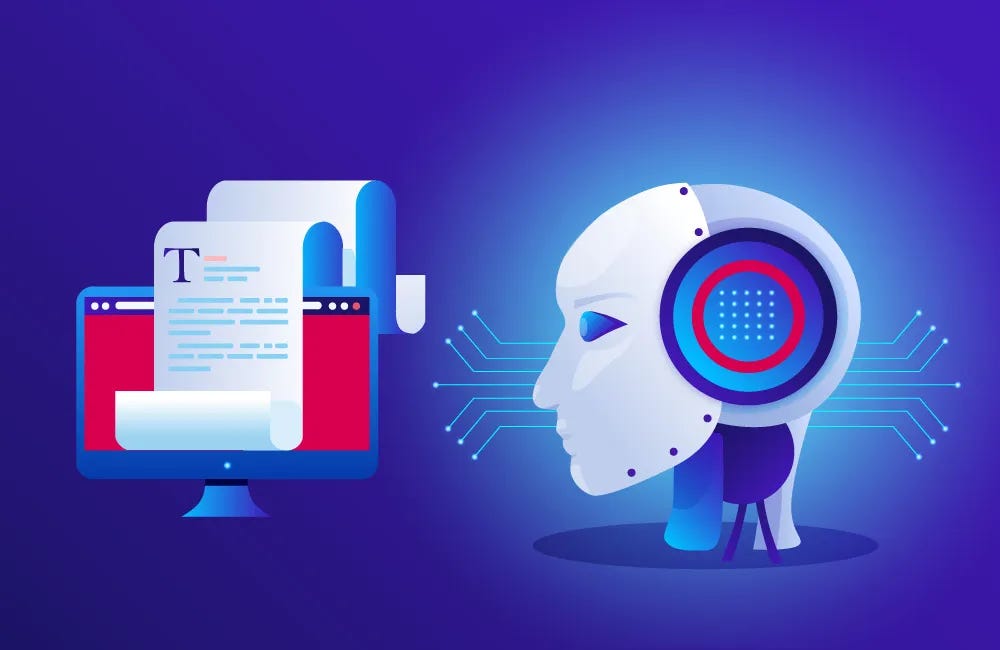Understanding AI Content
Artificial Intelligence (AI) has transformed the way digital content is created, optimized, and consumed. AI content refers to written, visual, or audio material generated or assisted by artificial intelligence tools such as ChatGPT, Jasper, or Google’s Gemini. These tools analyze massive data sets, understand language patterns, and produce coherent, human-like text within seconds. From blog articles and website copy to product descriptions and news summaries, AI content has become an essential resource for content marketers and businesses worldwide.
However, in the context of Google and AI content, understanding how this technology fits into Google’s search ecosystem is crucial. Many creators now apply generative engine optimization techniques to ensure AI-generated content is visible, relevant, and aligned with search intent. While AI tools can help produce high-quality writing quickly, they cannot fully replace human creativity, experience, and emotional connection. AI-generated text may sometimes lack depth, context, or originality — factors that Google’s algorithms consider when ranking pages.

To succeed with AI content, creators need to treat AI as a collaborator, not a substitute. The best results come when human expertise guides AI tools to ensure accuracy, authenticity, and value for readers. AI can generate ideas and drafts, but humans must refine and personalize the message.
By understanding what AI content is and how it works, creators can leverage this technology while aligning with Google’s expectations for trustworthy, high-quality, and user-focused information.
Google’s Official Position on AI Content
As artificial intelligence continues to transform digital marketing, many creators and SEO professionals are asking the same question: What is Google’s official stance on AI-generated content? Understanding this relationship between Google and AI Content is essential for anyone who wants to produce content that performs well in search results.

Google has made its position clear through multiple updates and statements from the Google Search Central Blog. The company does not penalize AI-generated content simply because it was created with artificial intelligence. Instead, Google evaluates all content — whether written by humans or AI — based on its quality, relevance, and usefulness to the user. In other words, how the content is created is less important than what value it provides.
This principle aligns with Google’s well-known E E A T framework — Experience, Expertise, Authoritativeness, and Trustworthiness. According to Google, high-quality content must demonstrate genuine knowledge, clear understanding, and trustworthiness. If AI-generated text meets these standards and offers helpful, original insights, it can rank just as well as human-written content.
However, Google warns against low-quality or spammy AI content. Automated text that is created only to manipulate rankings or that lacks originality violates Google’s spam policies. The search engine uses advanced algorithms and human reviewers to identify unhelpful, repetitive, or misleading material.
To align with Google’s expectations, content creators should focus on AI-assisted creation rather than full automation. This means using AI tools for research, outlining, or drafting — while humans provide final editing, context, and expert insight.
In summary, Google embraces AI as a tool that can enhance creativity and efficiency, but it continues to prioritize helpful, people-first content. The balance between Google and AI content lies in using technology responsibly while maintaining the authenticity and quality that Google values most.
How Google Detects AI Content
As AI-generated writing becomes more common, many creators wonder how Google and AI content interact — specifically, whether Google can detect when a piece of text has been produced by artificial intelligence. While Google has not released a specific “AI detection tool,” it does use advanced algorithms, signals, and human evaluation to assess the quality and authenticity of content. Even strategies such as Brand Mentions SEO, which rely on how often a brand is referenced across the web, are evaluated through the same focus on usefulness and trustworthiness rather than on the method of creation.
Google’s algorithms analyze multiple factors to determine whether content is helpful, original, and relevant. Rather than focusing on who or what created the text, Google evaluates how the content performs for users. Metrics such as user engagement, dwell time, click-through rate, and bounce rate help Google understand if readers find the information valuable. If AI content fails to satisfy user intent or appears repetitive, shallow, or misleading, it may rank lower in search results.
In addition, Google’s systems look for patterns of automation, such as unnatural phrasing, repetitive sentence structures, or overuse of keywords — signs that content might have been generated without human review. The SpamBrain algorithm and other machine learning systems are designed to detect mass-produced or low-quality AI text that violates Google’s spam policies.
However, Google does not automatically penalize AI-generated writing. If the content demonstrates expertise, accuracy, and originality, it can perform just as well as human-written material. The key is ensuring that AI is used as a support tool, with humans guiding the process to add depth, personalization, and credibility.
In short, when it comes to Google and AI content, detection isn’t about identifying AI tools — it’s about recognizing quality. Google rewards content that helps users, regardless of whether it was written by a person or assisted by artificial intelligence.
Best Practices for Creating AI Content That Google Loves
As artificial intelligence reshapes the digital world, creating high-quality content that aligns with Google’s ranking standards has become more complex than ever. The relationship between Google and AI content is built on one central rule: Google rewards value, not just volume. While AI tools can speed up production, it’s the combination of human creativity, expertise, and optimization that makes AI-assisted content successful in search results.
-
Start with Deep Keyword and Intent Research
Before generating text with AI, invest time in understanding user intent. Determine whether your target keywords serve informational, commercial, or transactional purposes. Tools like Google Keyword Planner, Ahrefs, or SEMrush can help you identify secondary and semantic keywords related to Google and AI content. Use these insights to guide your AI prompts — this ensures that the generated content aligns with what users are truly searching for and meets Google’s “Helpful Content” standards.
-
Follow E-E-A-T Principles
Google evaluates all pages — human or AI-generated — using its E-E-A-T framework: Experience, Expertise, Authoritativeness, and Trustworthiness. To meet these standards:
- Include personal or professional experiences that demonstrate real understanding.
- Reference reputable sources, data, and case studies.
- Add an author bio to build credibility.
When Google and AI content work together within this framework, search engines recognize the content as both informative and reliable.
-
Humanize and Optimize AI Output
AI can produce structured and grammatically correct text, but human editing gives it life. After AI generates the first draft, review it carefully:
- Refine tone: Make it conversational yet professional.
- Add SEO elements: Include the main keyword naturally in headings, introductions, and conclusions.
- Check originality: Ensure the content isn’t repetitive or too generic.
- Enhance readability: Break long paragraphs into short, scannable sections that fit Google’s UX standards.
-
Avoid Spam, Over-Optimization, and Keyword Stuffing
One of the biggest SEO mistakes is relying on AI to mass-produce text filled with repetitive keywords. Google’s algorithms — especially SpamBrain — detect over-optimized or machine-like writing. To avoid penalties, maintain a balanced keyword density, use synonyms, and focus on natural sentence flow. Remember, Google values context and clarity more than keyword frequency.
-
Add Unique Human Value
The true power of combining Google and AI content lies in originality. Use AI for research and structure, but let human expertise add insight, emotion, and unique storytelling. Include examples, real-life data, or personal perspectives that AI cannot replicate. This approach not only increases engagement but also signals to Google that your content offers genuine value.
| Practice | Description / Steps | SEO Focus / Tip |
|---|---|---|
| Deep Keyword & Intent Research | Understand user intent before generating AI content; classify keywords as informational, commercial, or transactional. | Use tools like Google Keyword Planner, Ahrefs, or SEMrush; guide AI prompts with primary, secondary, and semantic keywords. |
| Follow E-E-A-T Principles | Ensure content demonstrates Experience, Expertise, Authoritativeness, and Trustworthiness. | Include personal/professional experiences, cite reputable sources and case studies, and add author bio. |
| Humanize and Optimize AI Output | Edit AI drafts to improve readability, tone, and engagement. | Refine tone, include main keywords naturally in headings and intro/conclusion, ensure originality, break content into scannable sections. |
| Avoid Spam, Over-Optimization, Keyword Stuffing | Prevent overuse of keywords and repetitive AI-generated text. | Maintain balanced keyword density, use synonyms, focus on natural flow; avoid triggering SpamBrain filters. |
| Add Unique Human Value | Enhance AI content with human insights, examples, and storytelling. | Incorporate real-life data, opinions, case studies, or unique analysis to increase engagement and demonstrate genuine value. |
When done correctly, AI becomes a powerful assistant, not a replacement. By following these best practices, marketers can create AI-assisted content that meets both Google’s technical requirements and readers’ expectations — earning higher rankings, stronger credibility, and long-term SEO success.
Common SEO Mistakes with AI Content
While AI tools can streamline content creation, many creators make critical mistakes that prevent their work from ranking well. Understanding common pitfalls is essential for aligning Google and AI content effectively.
-
Overreliance on AI Without Human Editing
One of the biggest mistakes is publishing AI-generated text without review. While AI can produce grammatically correct content, it often lacks nuance, depth, and context. Google rewards content that demonstrates real expertise and trustworthiness. Ignoring human editing can result in shallow or generic content that fails to satisfy user intent.
-
Keyword Stuffing and Over-Optimization
Some marketers rely too heavily on exact-match keywords in AI content. Excessive repetition can make the text feel unnatural and may trigger Google’s spam filters. For SEO success, integrate keywords naturally, use synonyms, and focus on context rather than frequency.
-
Ignoring E-E-A-T Principles
AI content that lacks credibility, author expertise, or references is unlikely to rank well. Google evaluates pages based on Experience, Expertise, Authoritativeness, and Trustworthiness. Failing to add supporting sources, citations, or author credentials can harm rankings.
-
Producing Duplicate or Low-Value Content
Another common mistake is using AI to generate content similar to existing pages without adding unique insights. Google penalizes duplicate or thin content. Always enrich AI drafts with original analysis, case studies, or examples to provide real value.
-
Neglecting User Experience and Readability
Even well-optimized AI content can underperform if it’s difficult to read or poorly structured. Break text into headings, bullet points, and short paragraphs. Include images, tables, or lists to enhance engagement.
By avoiding these mistakes, creators can better align Google and AI content, ensuring that AI-assisted articles are not only efficient to produce but also optimized for search engines and valuable to readers.
The Future of Google and AI Content
The future of Google and AI content is both exciting and evolving rapidly. As artificial intelligence tools become more sophisticated, the line between human-written and AI-generated content is increasingly blurred. Google continues to prioritize helpful, high-quality content, meaning AI will serve as an assistant rather than a replacement for human creativity.
We can expect Google to refine its algorithms to better assess the value, originality, and credibility of content. AI-generated drafts may become more common, but they must still align with Google’s E-E-A-T framework. Content that demonstrates real expertise, provides unique insights, and satisfies user intent will always outperform generic AI-generated material.
Additionally, AI will play a growing role in content personalization and search optimization. Marketers may use AI not only for drafting content but also for analyzing trends, predicting user needs, and optimizing pages in real time. However, Google will continue to reward authenticity, meaning overreliance on automation without human oversight could harm rankings.
Looking ahead, the integration of AI into content creation offers new opportunities for efficiency, creativity, and scale. Success will depend on the ability to combine AI efficiency with human insight, ensuring that content is both engaging for readers and optimized for search engines.
In summary, the future of Google and AI content is not about replacing human writers but enhancing their capabilities. By leveraging AI responsibly and maintaining quality standards, content creators can stay ahead in the ever-changing SEO landscape.
Conclusion
The evolving relationship between Google and AI content highlights a key principle: quality, relevance, and user value always come first. While AI tools can dramatically improve efficiency and assist in content creation, they cannot replace human expertise, creativity, and authenticity.
To succeed in search rankings, creators often partner with professional services like Quanta agency to combine AI-generated drafts with careful editing, fact-checking, and unique insights. Following best practices — such as adhering to E-E-A-T principles, optimizing for user intent, and avoiding spammy or duplicate content — ensures that AI-assisted content performs well in Google’s algorithms.
Looking forward, AI will continue to shape the digital content landscape, enabling faster production, smarter personalization, and more data-driven insights. However, the key to long-term SEO success remains the same: producing high-quality, user-focused content that satisfies search intent and demonstrates expertise. By leveraging AI responsibly, marketers and writers can create content that both engages readers and ranks well, strengthening the link between Google and AI content for years to come.









